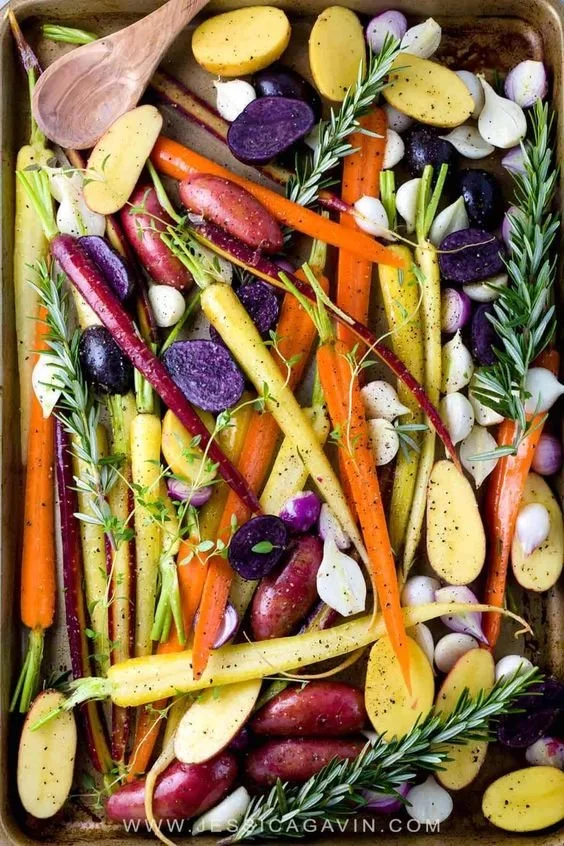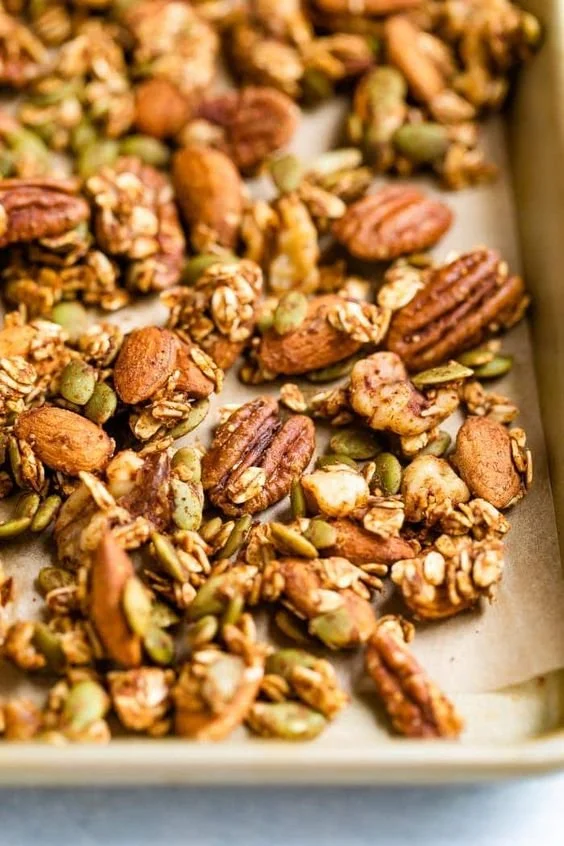Eating with the Elements: A Curated Winter Wellness Grocery List
Embracing Winter's Harvest: In the quietude of winter, nature offers a trove of treasures that promise not just flavor but also fortitude. The cold months invite us to turn inward, not only in spirit but also in sustenance, encouraging a grocery list that's aligned with the season's offering. It's a time to savor the hearty, the wholesome, the warming—and, most crucially, the seasonal.
The Philosophy of Seasonal Eating: There's wisdom in the rhythm of nature that advocates for seasonal eating. Winter produce, often dense in nutrients, is nature's way of providing what our bodies instinctively crave during the cold: energy, warmth, and immune support. Eating seasonally also means fresher, tastier ingredients that haven't traversed great distances, thereby retaining more of their nutritional value and supporting local ecosystems.
Your Winter Grocery List: A Symphony of Health As you draft your winter grocery list, envision it as a composition, each item a note that contributes to the harmony of health. At the conclusion of our exploration of winter's nutritious offerings, you will find an actual winter grocery list, thoughtfully assembled and waiting for you to select from, making your seasonal food journey both effortless and enjoyable.
Subterranean Jewels: Root Vegetables
Turnips, carrots, and beetroots, the earth's hidden treasures, delve deep into the soil, emerging as nutrient-rich gems. These subterranean jewels are a symphony of fiber, vitamins, and minerals, playing a vital role in nurturing our digestion and enriching our blood's health. In winter, their dense nutrient profile is especially crucial for maintaining energy levels and supporting the body's natural detoxification processes during the colder, less active months.
Photo: Jessica Gavin.
Autumn's Bounty: Winter Squashes
The seasonal serenade of butternut, acorn, and spaghetti squashes offers more than just culinary versatility. These gourds, ripened in autumn's embrace, are bastions of vitamins A and C, fortifying our immune defenses and nurturing our skin's radiance. Their rich antioxidant content is particularly valuable in winter for combating the increased oxidative stress caused by cold weather and indoor heating.
Photo: The Kitchn.
Winter's Green Warriors: Leafy Greens
In the heart of winter's chill, kale, chard, and collard greens stand resilient. These green warriors are a tapestry of essential nutrients - iron, calcium, and life-enhancing phytochemicals - integral for sustaining our health's fortress during the colder months. Their high vitamin content supports immune function and energy metabolism, which are vital for staying active and healthy in the face of winter's challenges.
Photo: Feeding My Kid.
Citrus Symphony: Citrus Fruits
Oranges, grapefruits, and lemons orchestrate a vibrant symphony of citrus just when our bodies crave an encore of vitamin C. These zesty fruits are winter's antidote, offering a refreshing burst of flavor and vitality to ward off the season's sniffles. Their high vitamin C content is crucial for immune support during the cold and flu season, and their natural sugars provide a much-needed energy boost during shorter, darker days.
Photo: The Roasted Root.
Nature's Nuggets: Nuts and Seeds
Almonds, walnuts, and flaxseeds are nature's nuggets, tiny yet mighty. Sprinkled throughout your day, they offer a melody of healthy fats and proteins, harmonizing perfectly with a winter diet. Their high content of omega-3 fatty acids and Vitamin E is essential for maintaining good heart health and skin condition, which can be particularly challenged by harsh winter conditions.
Photo: Eating Bird Food.
Aromatic Alchemy: Spices and Herbs
Ginger, turmeric, and rosemary weave an aromatic alchemy in our winter kitchens. More than mere flavor enhancers, they act as anti-inflammatory maestros and metabolic stimulants, adding both warmth and wellness to our winter meals. Their anti-inflammatory properties are especially beneficial for combating seasonal ailments like colds and flu, while their thermogenic effects help maintain a healthy metabolism during the colder months.
Photo: Mississipi Vegan.
The Importance of Eating Seasonally: Choosing seasonal produce isn't just a culinary preference—it's a health strategy. It aligns our diet with our body's needs, ensuring we consume what's ripe and ready to offer the most significant health benefits. Moreover, it supports our local farmers and reduces our carbon footprint, an embodiment of eco-consciousness that nourishes both body and planet.
A Winter of Wellness: This winter, let your grocery list be a testament to health and harmony. Select from the season's freshest, let each meal be an act of self-care, and find joy in the simple act of eating what nature intended for this frosty season. In this way, "Winter Joy" becomes more than just a phrase—it becomes a practice, a lifestyle, and a celebration of well-being.
Your Winter Grocery List: To guide your journey through winter's culinary landscape, here is a carefully selected list of seasonal ingredients, each chosen to nourish and delight, perfectly complementing the essence of this cozy season.
Fruits
Citrus Fruits: Oranges, Grapefruits, Lemons, Clementines
Apples: Varieties like Fuji, Granny Smith, and Gala
Pears: Such as Bosc and Anjou
Vegetables
Root Vegetables: Carrots, Beetroots, Turnips, Parsnips, Sweet Potatoes
Winter Squashes: Butternut, Acorn, Spaghetti, Kabocha
Leafy Greens: Kale, Swiss Chard, Collard Greens, Spinach
Brassicas: Brussels Sprouts, Broccoli, Cauliflower
Onions and Garlic: Essential for flavor in many dishes
Nuts and Seeds
Almonds, Walnuts, Pecans: Great for snacking or adding to dishes
Flaxseeds and Chia Seeds: Ideal for breakfast bowls or smoothies
Whole Grains
Quinoa, Brown Rice, Barley: Hearty grains for soups and salads
Oats: For warming breakfasts
Protein Sources
Lean Meats: Such as chicken breast, turkey, or lean cuts of beef (for non-vegetarians)
Legumes: Lentils, Chickpeas, Black Beans
Tofu and Tempeh: For plant-based protein options
Dairy or Dairy Alternatives
Greek Yogurt or Plant-based Yogurt: Rich in probiotics
Cheese: Parmesan, Feta, or your favorite cheese for adding flavor
Milk or Plant-Based Milks: Almond, oat, or soy milk
Herbs and Spices
Fresh Herbs: Rosemary, Thyme, Parsley
Spices: Ginger, Turmeric, Cinnamon, Nutmeg
Other Essentials
Olive Oil and Coconut Oil: Healthy fats for cooking
Vinegar: Apple cider or balsamic for dressings
Honey or Maple Syrup: Natural sweeteners
Stock or Broth: Vegetable, Chicken, or Beef for soups and stews






